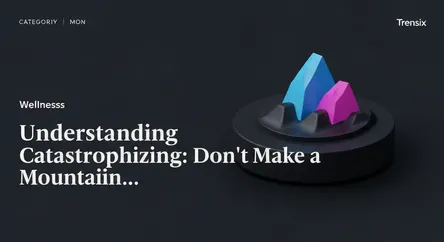Wellness
Understanding Catastrophizing: Don't Make a Mountain...

Learn what catastrophizing is, why this negative thought pattern is a key topic in mindfulness, and how it impacts mental well-being.
What is it?
Catastrophizing is a common cognitive distortion where an individual assumes the worst possible outcome in a situation, even if it is highly unlikely. This pattern of thinking takes a minor worry or setback and magnifies it into a major catastrophe. For example, believing that failing a single test will lead to complete failure in life is a form of catastrophizing. Often described as a mental "snowball effect," a small concern gains momentum until it becomes an overwhelming avalanche of fear and anxiety. It's an irrational thought process that distorts reality, making situations seem far more dire than they actually are.
Why is it trending?
Discussions around catastrophizing are growing within wellness and mindfulness because of its direct link to mental health. It is a key symptom and contributor to anxiety disorders, depression, and post-traumatic stress disorder (PTSD). As society places a greater emphasis on mental wellness, understanding and managing such negative thought patterns has become a priority. The concept is also prominent in discussions about chronic pain, as research shows catastrophizing can intensify the perception of pain and increase disability. Mindfulness practices are often recommended to counter catastrophizing by grounding individuals in the present moment.
How does it affect people?
Catastrophizing can significantly harm a person's quality of life by creating a self-reinforcing cycle of negativity. This thought pattern can lead to persistent feelings of anxiety, hopelessness, and helplessness, which can trigger or worsen depression. It puts the body under constant stress by activating the "fight or flight" response, which can lead to physical symptoms and fatigue. Ultimately, it impairs daily functioning by making people overestimate threats and underestimate their ability to cope, preventing them from taking positive action and managing challenges effectively.